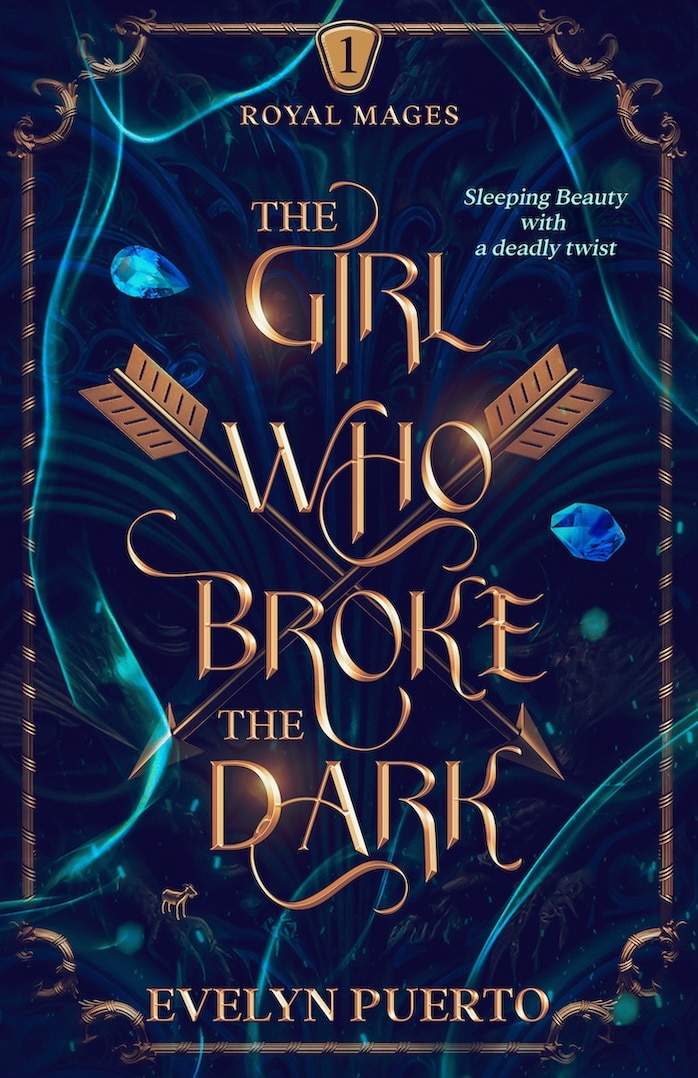Participating in a writer’s group can help you improve your skills and give you support when you need it.
But it can be hard to get a group to stick it out for the long haul. People run out of work to submit, or something in the group dynamics doesn’t mesh, or one by one your members just start slipping away like you're in an Agatha Christie novel.
However, it doesn’t have to be that way. You can boost your group’s odds of sticking it out with some simple steps that will help you establish a constructive group dynamic from the start. Here’s my top five to get you started.
1. Keep it small.
My group is only four people, and it’s just right for us. By keeping your group small, it’s easier to maintain a safe environment where everyone feels safe sharing work and discuss challenges.
2. Choose writers at a similar skill level.
I met the other members of my group in a writer’s class for beginners—it was a great way to connect with other serious-minded writers at a similar level.
Though we’ve all only been writing for a few years, we each have different strengths, perspectives and even write in different genres. We help each other become more well rounded while supporting each other through common struggles for developing writers at this stage. We all gain from this group, but more experienced writers probably wouldn’t benefit as much as we do.
3. Keep it flexible.
I think the smartest thing my group has done is stay flexible about how we operate. We try to meet about once a month, but change when and where depending on what works best for everyone. We try to rotate between members for critique time, but switch as necessary if someone has a crazy month.
And you don’t have to submit work to take advantage of your committed time slot, either—you can also choose to bring a writing-related topic for discussion.
4. Don’t get too ambitious.
We choose to meet a once-a-month commitment to avoid making the group too much of a burden on anyone—the same goes for our two-critiques-per-session rule. Additionally, we limit each submission to fifteen double-spaced pages.
What your group chooses to do may be different, but let your decisions be guided by the same principle: protecting yourselves from becoming overburdened by the commitment.
Remember, you can always adjust later if it’s not right.
5. Set clear guidelines for feedback.
Our group originally formed within a writing class, so we already had a set of critique guidelines to draw from. These guidelines have been an essential foundation for us.
From the beginning, we understood that, when giving feedback, we first give an overview statement of what we understand of the plot and characters in the scene, then move on to the items we liked, and then the areas we thought could be strengthened more.
Critique can be rough on even the toughest writers … respect the courage your group is showing by laying down clear expectations that keep critique friendly and supportive.
Writers, like other artists, get a bad rap for being flighty and inconsistent. But you can get a group of writers to commit to a group long-term if you tailor it to meet the group’s needs.
Are you part of a writer's group? What tips do you have to create a group that lasts?
PRACTICE
Grab your pen! For fifteen minutes, write about what you would look for in a writer's group.
What rules would you set for yours? If you've been in one, what made it a success?
By day, Emily Wenstrom, is the editor of short story website wordhaus, author social media coach, and freelance content marketing specialist. By early-early morning, she is E. J. Wenstrom, a sci-fi and fantasy author whose first novel Mud will release in March 2016.




I’ve belonged to the same writer’s group for 7 years but its members change constantly. It represents all age groups and genres. Sometimes there are 10-11 members present, sometimes only 4-5. I like the small groups better. We send a memo ahead of time to see how many are coming and each brings a number of copies of what they plan to read. The reading should not take more than 10 minutes. We start with a very brief visit and share if anyone has been recently published. If so, that person brings chocolate for the whole group to celebrate!
Critiqueing is very positive and helpful; anyone can offer a suggestion. We meet twice a month at the local library conference room. No pressure if you miss a meeting or two.
One problem I have is that none of the other members write poetry and feel unqualified to critique it. I don’t write it often, but like to try different writing styles.
Our group is very inspiring and supportive.
We also meet occasionally at the home of one individual.
I love the idea of reading an article relating to writing if one does not have a story to share. Love to hear about other writing groups!
Thanks for sharing Eva, sounds like a great group. I love when someone chooses to bring a topic instead of a writing sample to our group–it can be a great opportunity to trade ideas with other writers.
We have more and more members of both groups experimenting with poetry. It is great fun. I may not know enough to critique poetry, but I know when something makes me sit up and pay attention. Isn’t that enough. Share your poetry. Reading it aloud to the group will be helpful to them as well as you. You may have some closet poets just itching to share too.
The writers Guild has about 15 active members with about 10 attending. We meet monthly with readings and comments first and then prompts, writing and reading the last half. This is open to everyone at any time. No rules. It is lovely as we get some interesting characters periodically. They usually drop out on their own, but it gives us more personalities to draw on.
The writing class I belong to also has 6 members, plus our teacher/coach who we pay to write curriculum for us. (She is a published curriculum author for school publishers and teaches writing classes in different venues.) Four of our members attend Guild regularly and one of them is the Guild leader. I love both groups, but at the smaller class we really do spill our guts and make a supreme effort to up the risk. Funny thing, we are all in our early 60s and bonded like sisters after three years.
Glad I am a member of both groups and also NaNoWriMo, which usually consists of weekly write ins in November at our local library, The five people who stay to the end type quietly without talking. It is a competition after all.
That sounds like a great mix! I will have to look for NaNoWriMo groups in my own area…what a great way to stay motivated.
I was part of a wonderful writers’ group a few years ago. If I were looking for another group now, I’d choose the same one. All were seasoned writers who’d published widely in literary anthologies, journals, and magazines. Some were working on novels, some on poetry, some on articles and essays for publication, and it was just fun getting together and sharing with these women, who were all on the same level. It was small, only about five of us. We met every two weeks and
shared. At the time I was working on a novel, and would read a new chapter
every time we met. It really helped me sharpen my writing, just knowing I’d be
reading my latest installment for an audience of pros.
Hey Debra. Sounds like an impressive crew.
They were Emily. They helped me finish the novel because I was accountable to them. That’s what made it work for me. Now I don’t have anyone holding my feet to the fire, and that being the case, I sometimes get slack. I do need a good group again. Thanks!
Always arrange for coffee, whether making it on site or someone bringing it. We used to meet at a Starbucks, then a coffee grinding shop. Now we have our very own room on campus, with its own coffee maker… priorities. That’s my veteran’s writing group, different ages, different wars, but we all have military in common. We try recruiting by suggesting our group supplies therapy for those suffering from PTSD… Once someone starts telling a story, the flood gates open for all of us.
That’s amazing. Story can be so powerful. Thanks for sharing. (And definitely with you on the coffee!)
Great advice, Emily. People will do it if it’s doable. Thanks!
Our writing group only rarely adjust meeting dates (i.e. if it falls on a holiday or something like that). Otherwise, we meet every other Wednesday rain or shine. It’s nice to know that is a standing date and it feels like a real commitment. There are also several of us, so trying to find a new date that would work for everyone would be a real nightmare.
I also suggest keeping things professional during the meeting time. Too often writing groups can dissolve into social chit-chat or therapy sessions. If people want to socialize, they should do that before or after the meeting, not during. This is a make-or-break deal for me.
That’s very different from my writing group experience, and it’s a really great idea, Rachael. Thanks!
I like the twice-monthly meetings. Most groups, including mine, meet only monthly. You must have built up a dedicated corps of writers.
We have an extremely dedicated bunch! And results, too–agents, published books (several YA and a memoir), MN Book Award nominations and finalists, etc. I think a lot of that has to do with the emphasis and importance we place on our writing.
I’m so in love with my writer’s group in Ramallah, Palestine, I made a short movie about them. We think it’s hysterically funny. If you’re curious, feel free to watch and get a sense of what a writer’s group can be: http://www.noralestermurad.com/2013/04/17/video-spoof-of-my-writing-circle-in-palestine/
I am not part of a formal group, but this last year I met someone who writes – similar in both genre and experience level – and it has been a great experience to talk about writing, critique each others’ work, and vent together about the stresses of pursuing publication.
After five years of attending them, I’m a champion of
critique groups for the developing writer, but I would argue with nearly every
point presented here. By keeping the group small you run the risk of
having too few members show up for the writer to gauge the true reception of a piece. We encourage newbies to partner up with more
experienced writers first to get over the fear of submitting to a larger group.
Choosing writers of similar experience levels tamps down
progress. Our group is blessed to have writers of all levels, some published, to share. To see good writing, learn how it works, is the ticket to rocketing your work ahead. Experienced writers get the chance to develop deeper rationales of how and why they do what they do by working with the less so.
“Keeping it flexible” may be good at the start but we’ve
found a format that works for us and haven’t been too keen on changing it. Poetry has its own group. We offer classes and workshops outside the
critique group. The critique group is
where you go to have your work reviewed.
We don’t pretend to be everything to everybody, writing or not. The expectations are clear. New members know what they’re in for.
Finally, as to ambitions and guidelines, we have just the
right mix of “encouragers” and “critics”, both necessary for the development of
a writer. Those strictly from one end of
the spectrum or the other can be detrimental. A good facilitator can help coral
and move things around. No matter what,
the truth needs to be said.
I don’t buy the “critique group is a safe haven”
concept. If anything is safe, no one is really stretching
or growing. If a group wants to get
together for a glass of wine or a bowling night, so be it. But don’t call it a critique group.
Would the word, “respectful” instead of the word, “safe” be a better fit in this context? To grow, we do need to see other perspectives of fellow writers. For instance, if there is a problem spotted within someone’s piece, cite it and ask if XYZ might be tried as a solution.
I’m in two groups. One of them (writersrumpus.com/about) is the exact opposite of what you describe: Big, open, with writers and illustrators, newbies through published authors, and membership constantly changing–and it works, except when the group size reduces the frequency of submission. But most people in the big group also belong to other, smaller ones, which makes for some good networking.